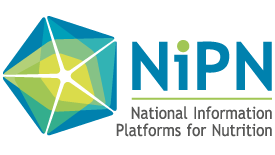Scope of the question formulation process
The NIPN country team will need to make certain strategic choices at the outset of the question formulation process.
- The NIPN approach is usually positioned to support a specific multisectoral nutrition policy or plan of action (MPPA). This focus is key to ensuring that the identified questions and subsequent analyses will respond to a specific need, that the appropriate decision makers are being engaged early on in the process, and that the answers to the questions are actionable and have the potential to influence a particular decision. For countries without a multisectoral nutrition policy or plan of action, it is recommended that a strategic decision is made on which nutrition policy, strategy, plan of action or possibly programme, the question formulation process will focus.
- Furthermore, the NIPN country team will need to make a strategic decision whether to engage with all sectors contributing to the MPPA at the same time or whether to initially work with a subset of these, and subsequently engage the others. For countries without an MPPA, a similar choice needs to be made regarding whether to focus on all sectors that are likely to contribute to improved nutrition or only a few of them.
The decision on which and how many sectors to engage in the NIPN operational cycle depends on several factors:
- The existing structure of multisectoral coordination and the feasibility of engaging multiple sectors.
- The capacity of the NIPN team to manage collaboration and data analyses with multiple sectors at the same time.
This decision is likely to be a trade-off between bringing everyone on board to ensure a multisectoral approach and managing expectations around what can be delivered.


